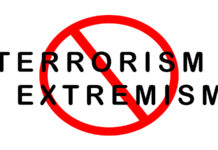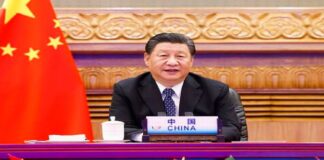The Cold War symbolised a strong deterrent posture. Both the West and the Soviet Union, while maintaining formidable conventional military capabilities, successfully deterred each other by deploying strong nuclear forces. The fear of a military conflict spiralling into a nuclear holocaust prevented both these blocs from going to war, thereby reinforcing the salience of nuclear weapons in maintaining robust deterrence. However, the Soviet Union’s sudden collapse in the nineties brought a revelatory change in the world order, thus partly diminishing the importance of nuclear weapons to deter adversaries and future conflicts.
By Harinder Singh
In the Cold War era, while inter-state wars took a backseat, the non-state and third-party actors became important disrupters in the geo-strategic environment. Proxies became the new tools in the hands of global powers to leverage power and influence. At a broader level, warfare was reduced to ideological power plays and shifts, motivated regime changes, proxy wars and insurgencies, resource exploitation, and imposition of trade monopolies and sanctions. For almost a quarter of a century following the end of the Cold War era, the world witnessed the uncontested primacy of the United States. This order is yet at another inflection point, where it is often argued that neither the history has ended nor has the ideological competition diminished any bit.
With the rise of China and other regional powers which are as disruptive as the rising ones, inter-state wars seem to be re-emerging as a pre-eminent form of conflict, albeit in a newer form. Conventional wars are returning with little regard to a nuclear overhang, but surely in the shadows of a newer form of conflict, which is largely hybrid in nature and has the potential to re-write the nature and character of future wars.
The Digital Age and Warfare
Hybridity in warfare is becoming the defining feature of this century. Arguably, the digital age is shaping the geopolitics and future of warfare, in ways the nuclear weapons shaped deterrence and conflict in the 20th century This raises the question of whether the growing competition in the field of cyber and other digital technologies has the potential to produce a comparable impact on the emerging international world order, and in turn a deterrent effect on war and conflict.
The Ukraine conflict highlights the increasing salience of hybridity in warfare which is driven by an unprecedented revolution in new-age technologies and the corporatisation of warfare by global tech-giants. Today, a surfeit of technologies from cyber to aerospace, precision munitions to unmanned platforms, hyper-sonics to autonomous systems, AI and quantum computing to blockchain technologies is driving hybridity in warfare. The uniqueness of battlefield sensors, the stealth of non-crewed platforms, the power of computing and algorithms, and the open-source revolution have brought us to a point where a sea of data can be accessed and stored.
Relying on AI, and its incredible manipulative power, these inconceivable amounts of information and geo-data are being routinely fed into machines to connect the dots and predict the battle outcomes.
Tech Competition in Warfare
A secure and reliable cyber space is the key to national security. Be it the economy, food, health, energy, infrastructure, banking and financial sectors, all of these domains contribute to the security and well-being of the state. But there is nothing as significant as cyber security, which no country can manage alone, thus necessitating hi-tech cooperation and collaboration at a trans-national level. The fact that cyber-security has become the foundational layer to all domains of national security can no longer be ignored, as it impacts national security planners and practitioners across the public policy spectrum.
Nation-states perforce have no choice but to strengthen their cyber security capabilities for a few reasons. First, the boundaries between wartime and peacetime needs have blurred due to the fading distinction between kinetic and non-kinetic domains, resulting in enhanced scope and necessity for national security. Second, the management of cyber security threats is no longer a matter of concern for the governments in power alone, but also of utmost interest to non-governmental agencies and business corporations. And third, the cyber-attacks are often organisation-neutral, which highlights the importance of strong collaboration between the government, the military and the private sector in terms of information sharing, response and mitigation.
The security implications of an increasing cyber and technological rivalry between adversarial states are therefore immense. For instance, any disruption in the key information infrastructure or hi-technology related production lines can have severe implications and consequences for national security. This challenge calls for like-minded states, allies and partners to be resilient by remaining competitive, and innovative in key war-fighting technologies and domains. Whether it is AI, or computing power, or satellite imagery and secure data transmission, or round the clock transparency on the battlefield, these new-age niche technologies are revolutionary to the future planning and conduct of warfare.
In order to maintain a pre-eminent position in these niche technologies, there is a need to collaborate with like-minded countries and mega-tech corporations pioneering in innovation. The private sector leads the cutting-edge of innovation and development of hi-tech platforms required to shape and fight future wars. The manner in which militaries could leverage these niche technologies to coerce or defeat an adversary is creating a new dilemma amongst security planners and practitioners. This fear is also partly redefining the salience of nuclear weapons to deter future wars and conflict.
Threats, Terrain and Technologies
Three aspects, i.e., the hybrid threats, the continuously expanding terrain of hybrid warfare and the niche technologies, are increasingly shaping our understanding on the nature and character of future wars.
First, security threats are evolving at an unthinkable pace. From well-defined and clear-cut conventional threats, several shades of hybrid warfare are defining the new-age security threats. Historically, the threats have always been evolving over time, but what is new is the sheer expanse and reach of these new-age threats in the digital domain. Deep fakes, real-like videos and disinformation campaigns are manifestly overwhelming the national security planners, thereby making it difficult to discern truth from fiction. With generative AI emerging as another important threat actor, the role of cyberspace in warfare and its real impact on the battlefield cannot be precisely predicted or defined. Simply put, these new-age threats need a new definition much beyond the normally explained constructs of external, internal or human security.
Second, wars are increasingly turning trans-national, if not trans-continental or trans-corporation. The Ukraine war is reflective of this novel and emerging trend in warfare. The new-age wars strengthen the notion of a collaborative and collective effort to deter, fight and defeat a mutual adversary. No country has the necessary money, mind-space, manpower, machines and material to tackle these new-age threats and their sheer expanse and technological dimension. This not only necessitates like-minded countries to come together, but also bring the private sector led by the global tech giants closer to the government and the military, to increase their involvement. War-fighting is stepping into an era, where military and non-military personnel will have to ideate, plan and fight alongside to win hybrid wars. This be a compelling policy choice rather than an exception.
And third, with the increasing range and dimensions of hybrid threats, governments and militaries have to operate in an ever-expanding security environment and landscape. This is leading to increased experimentation with hybrid war-fighting technologies that might or might not produce durable battle outcomes. As generative AI expands in theory and practice, both the defender and the offender will struggle to shape and direct new attack vectors. Harmonising this `kill-chain` amongst a range of emerging kinetic and non-kinetic war-fighting technologies will be doctrinal challenge. For instance, Search and Seek, Strike and Scoot, and Survive to Strike are a few doctrinal dyads that would necessitate seamless integration of new-age technologies to produce battle winning effects. At yet another level, future wars may well translate into AI versus AI wars, with each side trying to outwit the adversary on the digital battlefield. Warfare in the long term might translate into a story of innumerable hybrid hits and misses, till one or the other side establishes mastery over these technologies and threats.
The Modernisation Challenge
Nation-states are pursuing military modernisations to meet a range of security challenges at speed and cost as never before. The capability development paths adopted by most military powers often intersect in terms of preferred new-age or legacy technologies and indigenous industrial bases, thus providing an opportunity for like-minded governments and militaries to collaborate in tackling both new-age and age-old threats. The fundamental shift in hybrid threats due to the rise in cyber and technological competition amongst adversarial states requires policy-makers and practitioners to recalibrate modernisation programmes from the earlier focus on traditional military capability needs to a mix of kinetic and non-kinetic war-fighting capabilities.
The real challenge lies In quantifying the inter-se requirement of kinetic or non-kinetic capability needs. Though earlier, the challenge was related to sharing available resources amongst the traditional pillars of national security, now the need has arisen for equitable sharing of the same resources in the development and fielding of hybrid and non-hybrid capabilities. It therefore requires a quantification of all new-age security threats—hybrid or otherwise—against a model or theoretical construct that satisfies both conditions. This is the new risk to the military modernisation challenge.
In the absence of any credible planning data, governments and militaries are likely to mis-define the requirement of non-kinetic hybrid competencies, resulting in an imbalance between the two requirements. Military planners and practitioners often tend to over-estimate or under-estimate the non-kinetic capability needs and there lies the need for caution and precision. With increasing budgetary allocations to India’s military modernisation effort, a policy alignment might be necessary to maintain the right balance in the development, production and fielding of required kinetic and non-kinetic war-fighting capabilities.
In the current digital age, policy, process and preparedness on traditional and non-traditional security threats to a nation-state will have to be a healthy mix of sound ideas, capital and coordinated action between the public and private sectors. Nation-states are today moving towards a nature of war governance where the political leadership and the state bureaucracies—both civil and military—will have to co-opt the civilian technological expertise and `nationalist` hi-tech corporations in the planning and conduct of future wars.
This article first appeared in www.idsa.in and it belongs to them.












